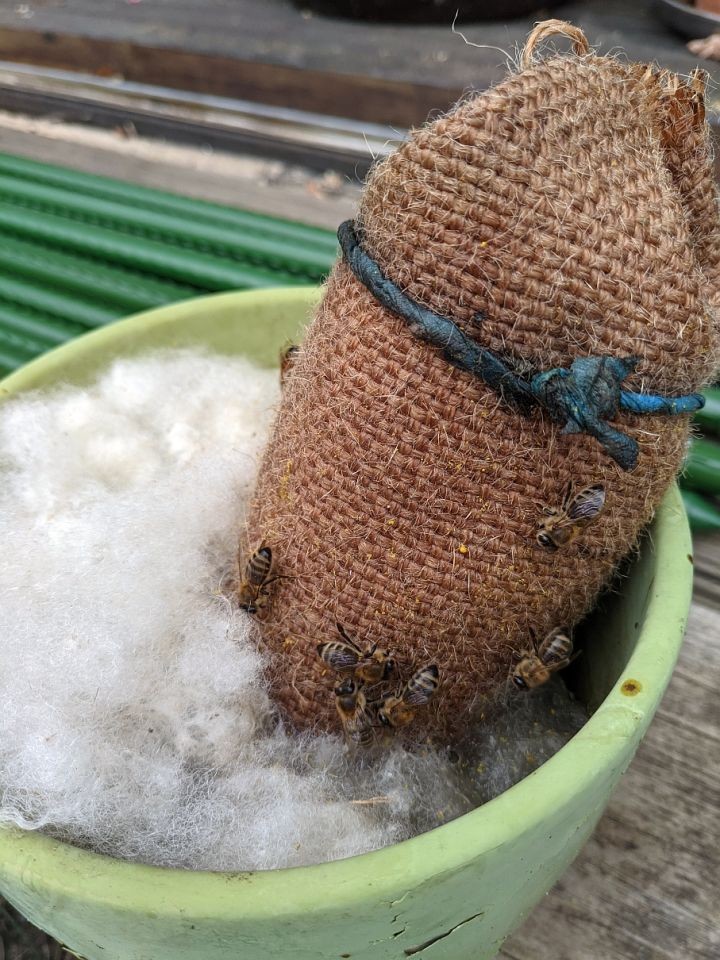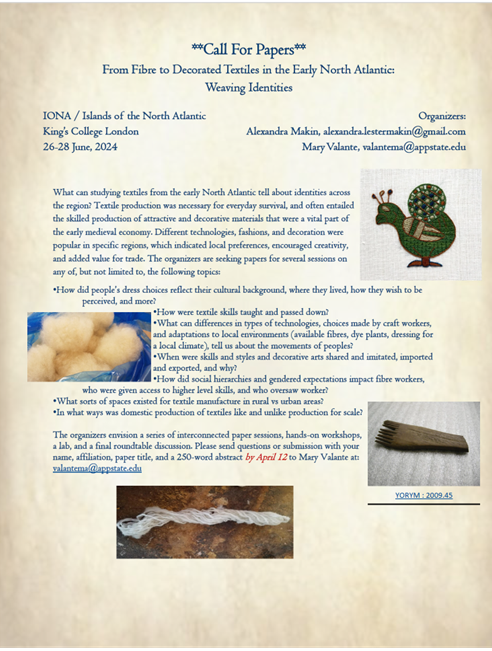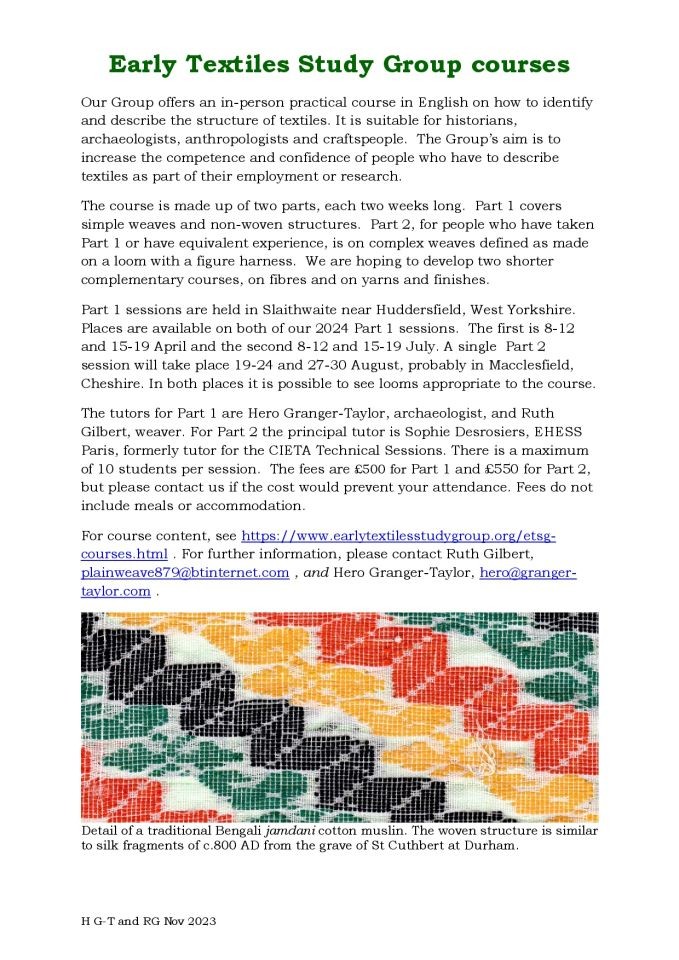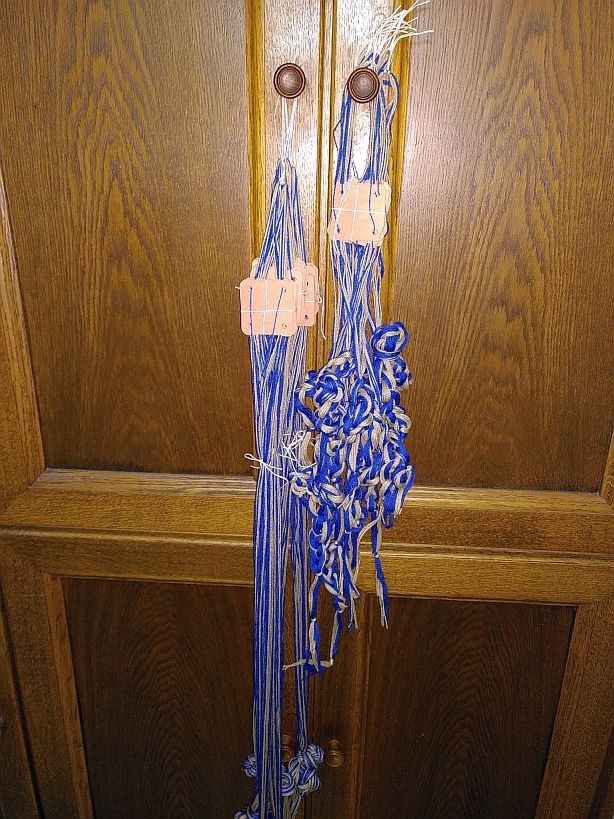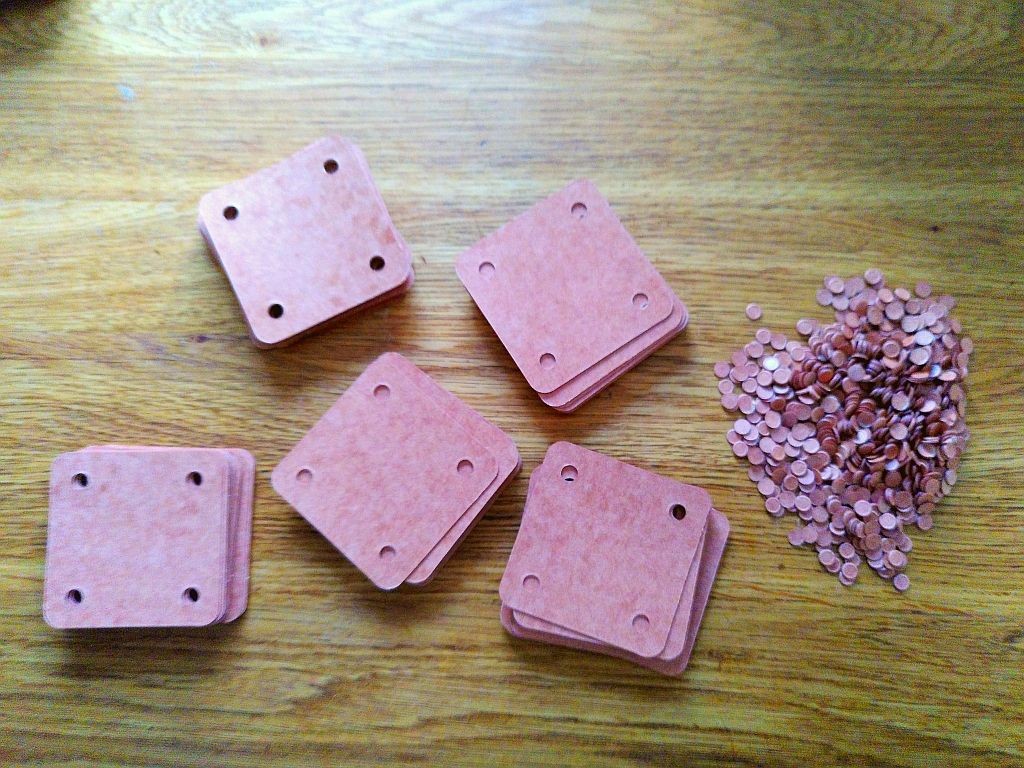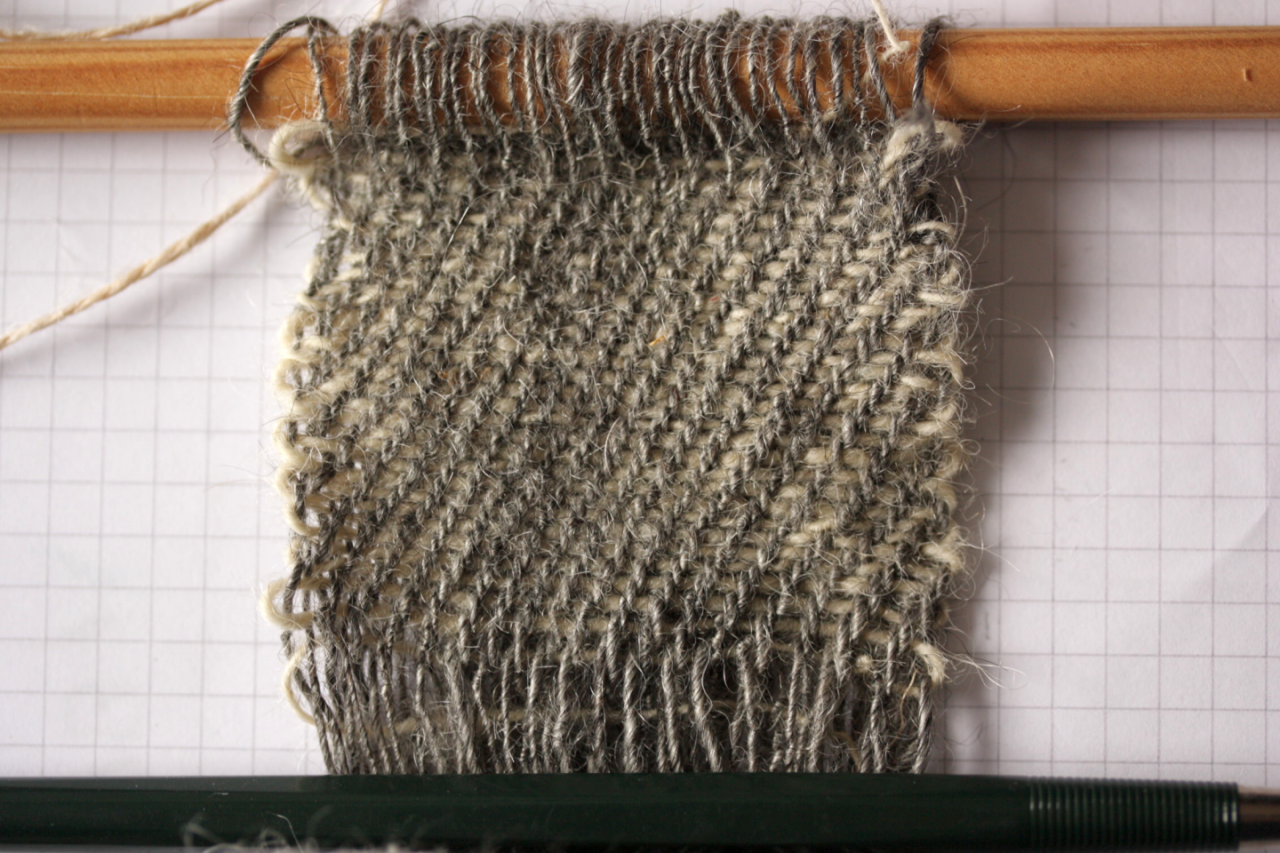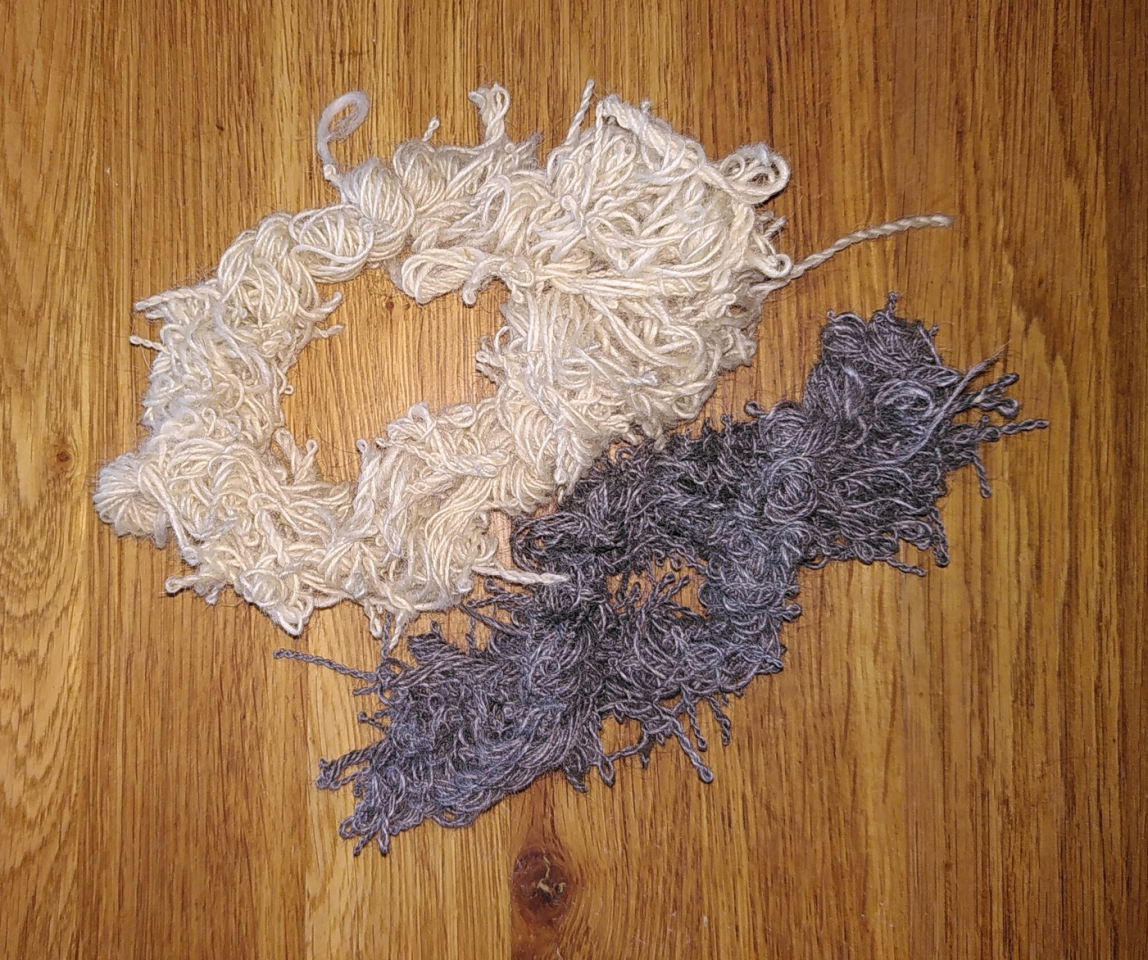It's springtime(ish) again, which means the bees are out and about - and this is the season where they are in need of water. (In summer, too, but it's important in spring as well - they need water to be able to digest the pollen.)
Unfortunately, bees cannot swim, so the bee bar should be safe for them. I've found drowned bees in the saucers under pots where there was water standing after the rain. That's sad to see.
Over the years, I've tried different things, and the current iteration looks like this:
It's a piece of coarse fabric wrapped around a mix of wood shavings and wool. That's set into a pot filled with water, and to prevent accidental drownings next to the fabric roll, I've stuffed in some more wool to keep the surface covered. It took the girls from the neighbourhood a few days to get it, but now they seem to appreciate their new bar!





